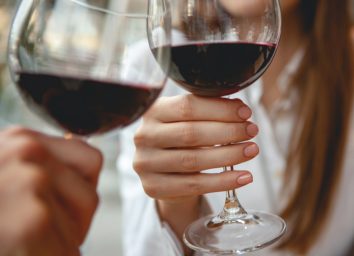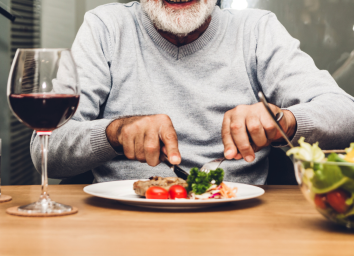6 Breakfasts Enjoyed By The Longest-Living People in The World
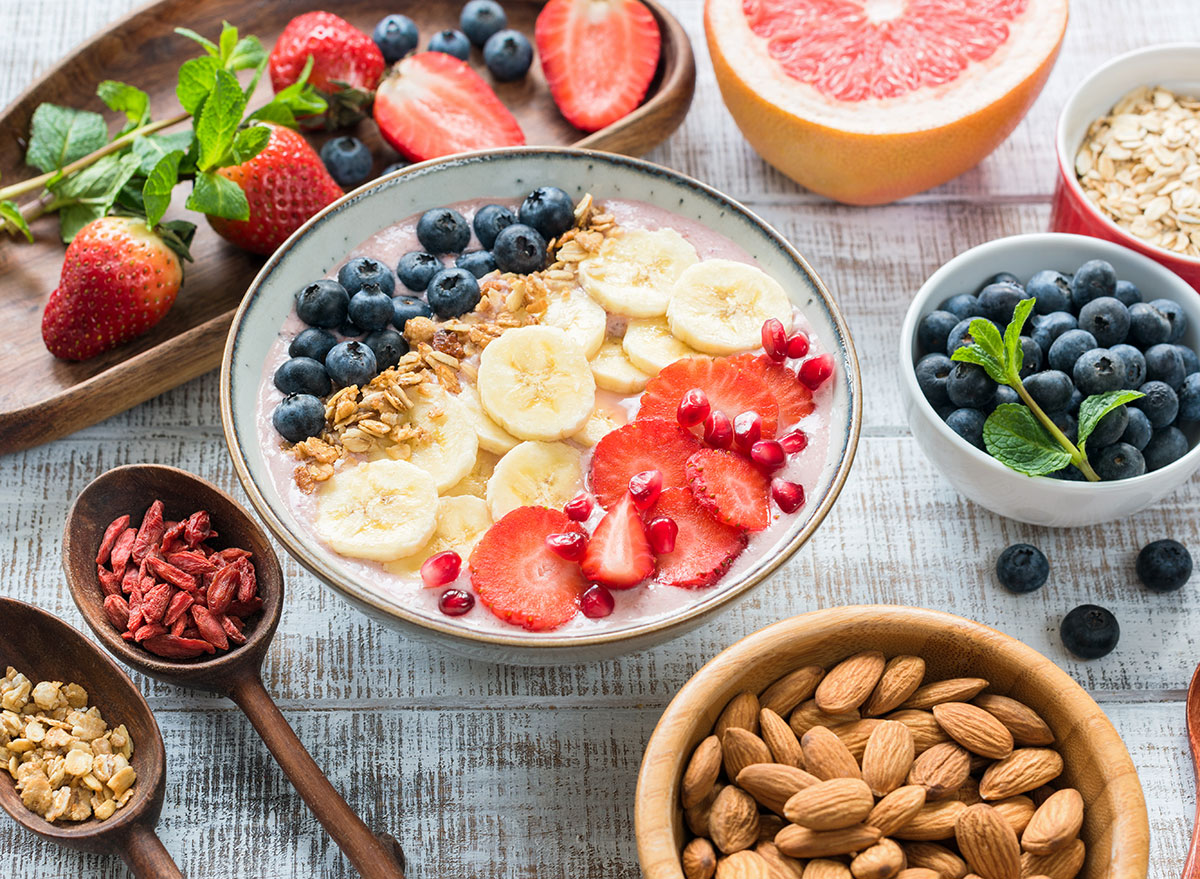
If you're hoping to live a long, healthy life, breakfast is a good place to start. We're all looking for simple tweaks to lead a healthier lifestyle, and the world's Blue Zones—the regions across the globe that have the highest numbers of individuals who live to age 100 and beyond—are a good place to turn to for some insight.
"The Blue Zones are areas around the world that have been shown to have some of the highest longevity rates in the world. They were originally created by a group of scientists and a science writer (Dan Buettner)," says registered dietitian Bill Bradley, RD, who is the co-author with Koula Barydakis of Foods of Crete: Traditional Recipes from the Healthiest People in the World. "The scientists took a blue marker and circled the places in the world with the healthiest people. This is why they are called Blue Zones."
Adding to that, registered dietitian Kim Yawitz, RD of St. Louis, Missouri, notes that "though these regions are very different in geography, tradition, and culture, researchers have identified nine common lifestyle themes that promote longevity in the Blue Zones." As Yawitz highlights, three of those themes relate to the diet. "People in the Blue Zones eat just enough food to sustain their bodies, with most calories coming from plants. In fact, Blue Zone residents eat an average of just 15-20 ounces of meat per month, compared to an average of 352 ounces of meat per month in the U.S."
Ahead, a look at five go-to breakfasts from around the world's Blue Zones. Read on, and for more on how to eat healthy, don't miss The #1 Best Juice to Drink Every Day, Says Science.
Yogurt, honey, fruit and nuts – Crete and Ikaria, Greece
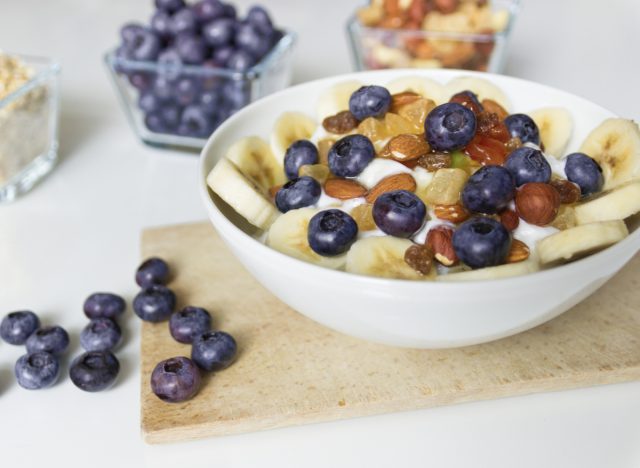
"People often ask me what is eaten on the Greek islands of Crete and Ikaria, where the healthiest people in the world live. The Crete of the 1950s had the highest longevity rates in the world (and the men lived to be the same age as the women). The island of Ikaria has the highest rates of people to live to 100 years of age in the world. One of the lesser-known facts about the people of Ikaria was that many wouldn't eat breakfast at all. They practiced their own version of intermittent fasting," offers Bradley.
"If they do eat breakfast, it is often something simple like yogurt with honey, some fruit and nuts and sourdough bread and extra virgin olive oil," he continues, noting that what does stand out about their breakfast diet is that it is all from their own land.
"The yogurt is from sheep and the sheep are grass-fed. The fruit they eat comes from their own non-sprayed trees. Organic is the natural way," says Bradley.
Bradley also points to a recent study that showed that people that eat a Mediterranean Diet will increase their lifespan by up to 13 years. "This study shows that people who eat a Mediterranean Diet have an incredibly increased lifespan, but what they don't take into consideration are all the extra benefits of eating organic, non-adulterated foods that you are foraging and growing yourself," he says.
Eggs, sourdough bread, olive oil – Crete and Ikaria, Greece
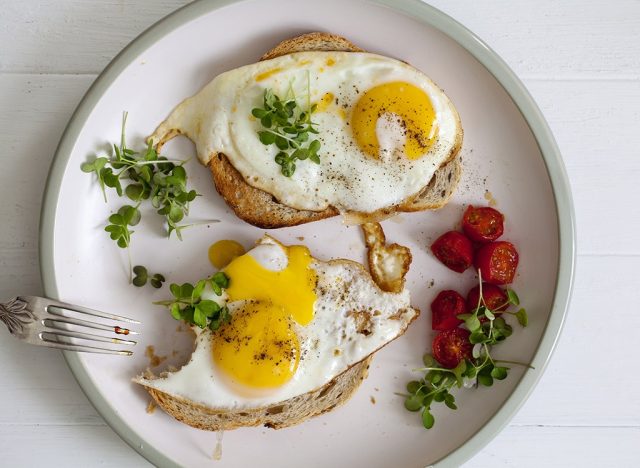
"If [people on the Greek islands of Crete and Ikaria] have olive oil, it is of the highest quality and has the anti-inflammatory qualities that a good olive oil will. When they do eat eggs, they are from chickens that are eating herbs like purslane so the chickens and the eggs are packed with anti-inflammatory omega-3 fatty acids. Some scientists believe that the large amount of omega-3s eaten by those on Ikaria (and Crete) are responsible for their longevity and health," explains Bradley. "The people live so long because they are eating food that they grow or forage for themselves. They are eating a plant-based diet (which is true of all the Blue Zone areas)."
Miso soup, seaweed, natto, and fresh produce – Okinawa, Japan
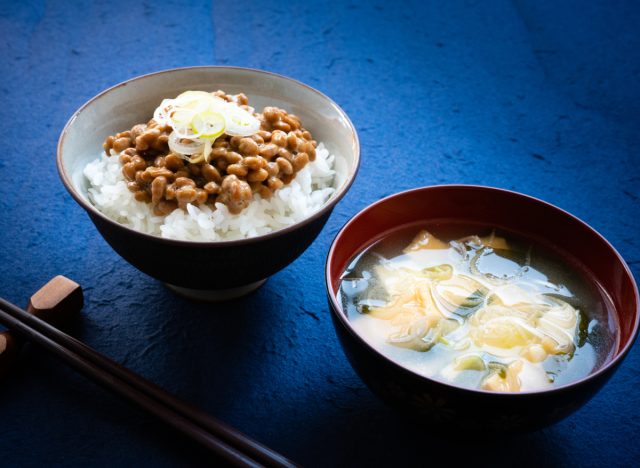
"A traditional Okinawan breakfast is served in several small dishes and includes a variety of fermented foods, fresh produce, and seaweed," says Yawitz. "It's no surprise that eating more fruits and vegetables supports longevity, but the standout ingredients in an Okinawan breakfast are miso, natto, and seaweed." Miso and natto are both types of fermented soy products.
"A recent study suggests that eating more [fermented soy products] may help lower your risk of premature death. In the study, people who frequently ate natto were up to 24% less likely to die from cardiovascular disease than those who didn't eat it very often," she says. "Mozuku, kombu, and other types of seaweed have a similar effect. Two recent and large studies have linked a higher intake of seaweed with a lower risk of dying from heart disease and stroke."
Oatmeal with nuts, fresh produce, and maple syrup – Loma Linda, California
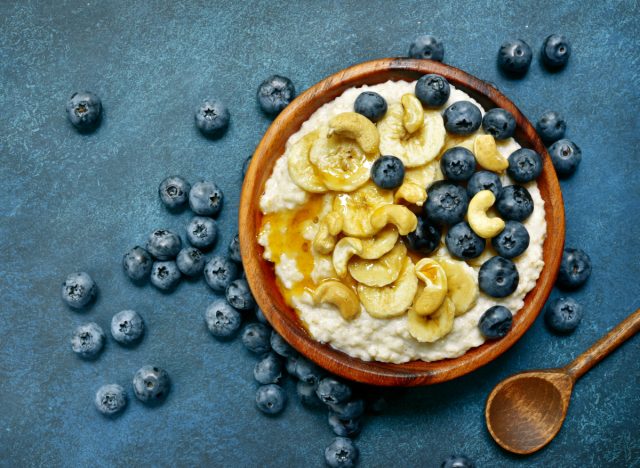
Bradley shares that inhabitants of Loma Linda, California are "known for their longevity, but not because of where they live, but more because of who lives there," referencing the large population of Seventh-day Adventists that reside there. "As part of their religion, they are mostly vegetarian. Their main breakfast food is made up of porridges and cereals. Their main breakfast would consist of oats in some form. They might have oatmeal with maple syrup and nuts for breakfast or oat waffles," says Bradley. "They could also have a millet porridge or granola made with oats, maple syrup, and nuts," he continues, noting that oats are incredibly nutritious and have been shown to significantly decrease risk of heart disease.
Rice and beans – Nicoya, Costa Rica
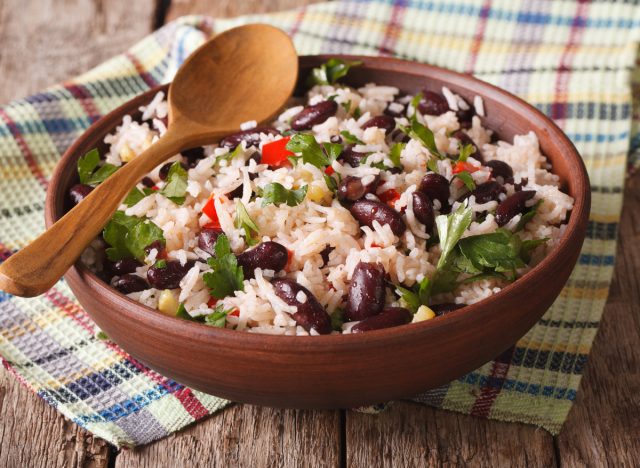
Yawitz shares that one of the most popular breakfasts in Nicoya is a dish called gallo pinto — a seasoned mix of beans and rice that's typically served with corn tortillas and coffee. "There's a lot to be said for starting your day with something you might normally think of as a side dish on taco Tuesday. Beans and rice pack a serious protein punch when eaten together. And a recent study suggests that getting more protein in general (and plant protein specifically) could help you to live longer," she says. "Not to mention, beans are one of the best sources of dietary fiber—a nutrient that can help lower your risk of heart disease, stroke, diabetes, obesity, and cancer."
Eating beans and rice for breakfast is not your thing? It may take a while to get used to, but after a few times you may be surprised how much you love it.
Bread, tomatoes, olive oil – Sardinia, Italy
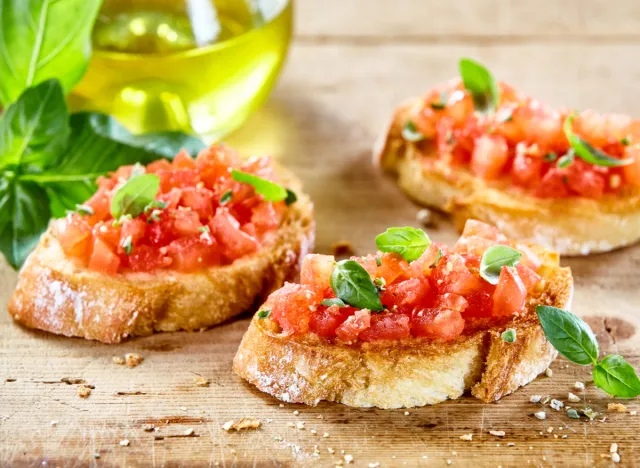
"Sardinia, like Ikaria, has a very large population who live to be over 100. Also, like Ikaria, breakfast is not a meal that is focused on much. Many Italians skip breakfast all together (once again, showing the benefits of intermittent fasting). When they do eat breakfast, it is simple and about using up leftovers," says Bradley.
"A breakfast in Sardinia could be leftover bread dipped in milk or rusks (twice-baked bread) with tomatoes and anti-inflammatory extra virgin olive oil." Again, all the ingredients are from their own land, organic, and fresh. "Lycopene in tomatoes has been shown to possibly reduce risk of cancer and heart disease. Recent studies have shown a potential connection between increased lycopene intake and decreased risk of prostate cancer and lung cancer," he adds.

